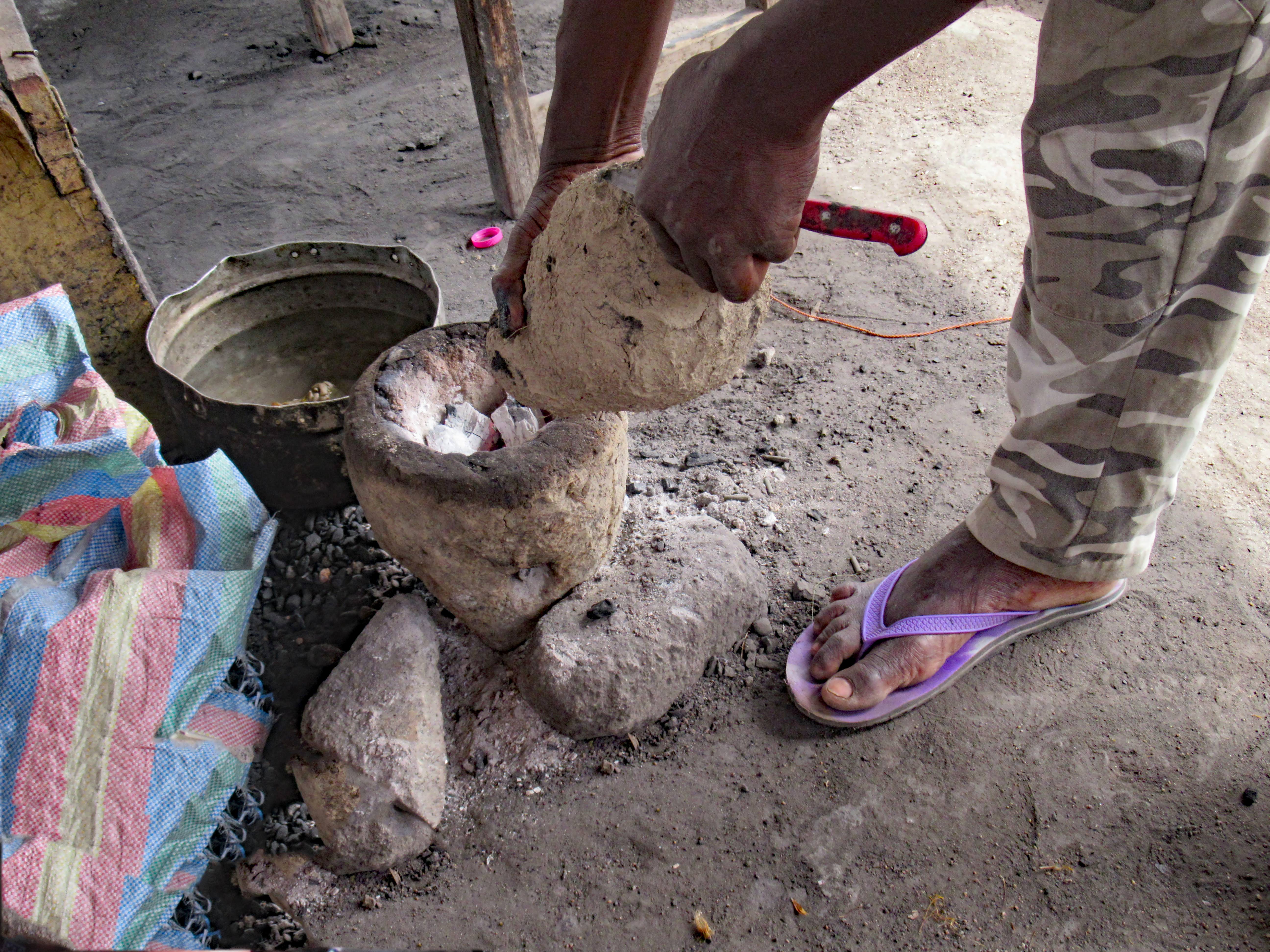The small Ghanian village of Sokoban Krofrom is famous for traditional brass casting of beads, jewellery and statues. Using techniques that haven’t changed for generations, it is the community’s main source of income.
Our journey took us along a kilometre of road where houses on both sides covered in red brick dust. The road before and after was tarmac, but the residents had refused to have their section done as the contractors would not offer compensation to some who would lose their home. They now regret the decision, but the contractors have refused their pleas to return.
We eventually stopped at a small roadside workshop, where the craftsman demonstrated the art of what is known as lost-wax casting: We were shown a huge lump of beeswax and told there were two methods to soften it: leaving it in the sun, or putting it into warm water. The craftsman then fashioned a small bird, an Adinkra symbol, from the softened wax, using a piece of bamboo to create delicate feather like markings. This was then covered in charcoal mixed with concrete and water, and then a layer of coconut fibre and clay. Having been left in the sun to dry, it was then heated to allow the wax to melt, and a small hole was bored into the top so that the wax could be poured out. The mould was then filled with molten brass and once set, it was broken to release the item – perhaps the origin of the phrase breaking the mould.
The guide demonstrated how some of his smaller items, like a number of bells, were made in one mould with the stalks being chopped off to make individual items. We were then invited to into the shop, and we bought three items which we could use as Christmas tree decorations for 150 Cedi or £9.












